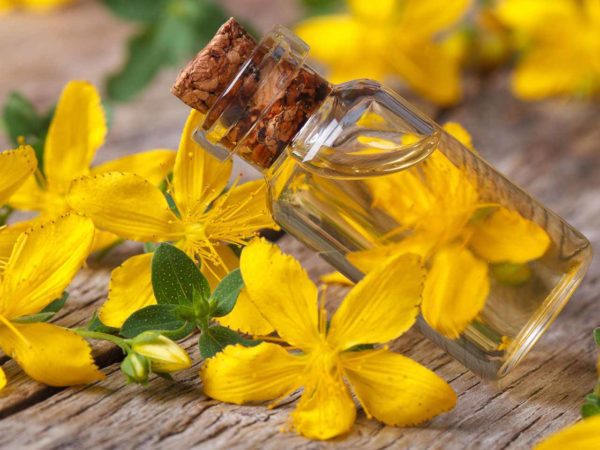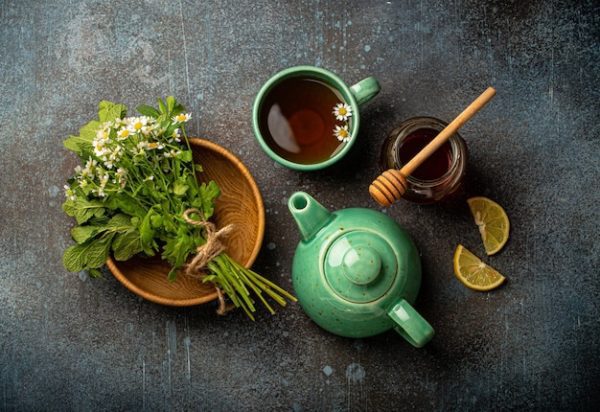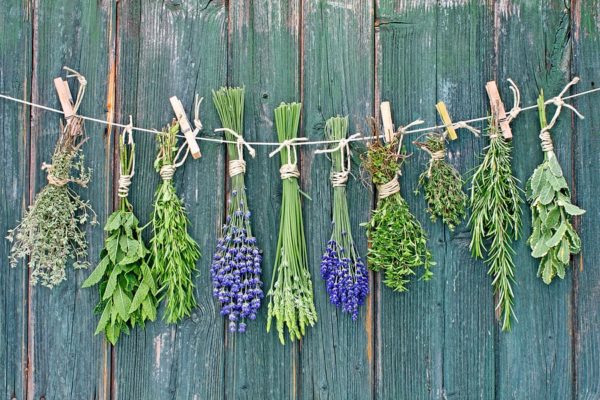
by Linda Caddick ~
Just like learning about the trees, you cannot truly learn about herbs (or anything) just by reading about it. You need to experience them. Look for herbs that grow easily in your area or plants that were used medicinally or ritually by the indigenous people of your area and learn about some of those. Everyone should be able to choose at least two or three herbs that they can grow or have regular access to. It is good to really get to know the herbs that you will work with; if possible grow a few herbs for yourself, or watch them grow in the wild and get to know them through the seasons. It is fun to use herbs in your food, medicine and rituals.
How to use herbs:
In the past no matter which country you look at; every person would have learnt which trees were good for firewood or carving, they would also have known which plants to use for various rituals or illnesses. As a young person was taught how to forage, hunt and cook they would have been taught which plants to use for what purposes. Every family would have had someone who knew about herbal medicine. Each village or tribe would have had a specialist in treating more serious ill health not able to be treated within the family group. Often the same person would have been in charge of the spiritual as well as physical health of the tribe.
Below is a starting point for learning how to use herbs to support your own health.
Before you start some safety precautions:
Always positively identify a plant before using it: Plants have an official Latin name as well as one or more common names. The same plants can have several common names (Gallium is also known as: bidi bidi, clivers and cleavers). More than one plant can have the same common name (e.g. Brahmi can be Centella, but more commonly it is Bacopa monnieri. Both are calming and improve concentration for meditation and grow in swampy condition but they are very different plants). One common name can have many species which may or may not be medicinal and may or may not use the same plant part and may have quite different doses. Mugwort is in the Artemisia genus and has many different species, only some of which are medicinal and they have different therapeutic effects. Sometimes there are several plants that look similar despite being unrelated (dandelion, false dandelion).
 – Which part of the plant do you use?
– Which part of the plant do you use?
Can be leaves, flowers, roots, bark or the entire herb (all the green part above ground). With some plants, different parts have different therapeutic effects e.g. dandelion leaves are diuretic and a tonic for the kidneys and dandelion root is a liver tonic. With Calendula the florets are more active than the entire flower. Echinacea root is the active part yet many preparations use the flowers.
-What time of year is best to harvest that particular plant: generally the root is harvested in autumn, the leaves or stems in spring or just before flowering, and flowers in spring or summer usually just as they open, seeds when they are ripe. There are exceptions however for instance with Ginkgo, the leaves are used, and they are collected in autumn once they start to change colour; but they cannot be used in their natural state, only a specific extract is therapeutic.
Is it used fresh, dried or treated in some way: most plants can be used fresh or dried. In some plants there is a change in the constituents with age e.g. garlic: fresh garlic is more antiseptic, aged garlic has more effect on reducing cholesterol levels in your blood. For other herbs (e.g. peony) they must be dried before use or they are harmful. With Echinacea, the active components degrade quickly after harvesting so need to be processed as soon as possible. As above Ginkgo leaves are only therapeutic once processed in a special way.
 – What is the dose if taking internally: for many herbs the adult dose is an infusion of one teaspoonful of dried or one tablespoonful of fresh herb to one cup of boiling water. Leave this to steep (covered) for 10 minutes and drink one cupful 3 – 4 times daily. For many herbal tinctures (alcoholic extracts of plants) the dose is in the vicinity of one teaspoonful two or three times daily. For others, however, the dose is significantly less e.g. Phytolacca at less than 1ml per day. Many can be harmful if you take too much.
– What is the dose if taking internally: for many herbs the adult dose is an infusion of one teaspoonful of dried or one tablespoonful of fresh herb to one cup of boiling water. Leave this to steep (covered) for 10 minutes and drink one cupful 3 – 4 times daily. For many herbal tinctures (alcoholic extracts of plants) the dose is in the vicinity of one teaspoonful two or three times daily. For others, however, the dose is significantly less e.g. Phytolacca at less than 1ml per day. Many can be harmful if you take too much.
-Special caution: Children have smaller doses than adults, infants generally would only have a very small dose and only of particularly safe herbs. Pregnant and breastfeeding women need to be especially careful of what they ingest. The herb may affect the unborn baby, may bring on contractions or may come through in the milk causing an effect in the child. Infants and pregnant or breastfeeding mothers are best treated by a trained professional.
-Label everything: once you pick a herb for drying or make an extract: label it. It’s amazing how a herb that is obviously recognisable when fresh can be not so obvious once dried, or you’ve dried three different herbs and now can’t tell them apart. Label everything so you know what it is, when you picked it or made it and how long you think it should last. Always check for signs of contamination (insects, spider webs, mould etc) before using (regardless of what you have chosen as an expiry date).
-Some plants are poisonous: natural does not mean safe. Also, some plants may interact with certain health conditions, disease states (Kava and liver problems) or prescribed medicines (St John’s Wort and most things, warfarin and most things). Some plants can result in side effects (St John’s Wort can cause sun sensitivity reactions). Some herbs are generally only used externally e.g. Woad (very astringent).
 Make sure you know what you are doing before you offer herbal remedies to another person, or take them yourself. Right plant, right part, harvested appropriately, taken fresh or preserved and taken at an appropriate dose.
Make sure you know what you are doing before you offer herbal remedies to another person, or take them yourself. Right plant, right part, harvested appropriately, taken fresh or preserved and taken at an appropriate dose.
Wildcrafting
When picking herbs in the wild:
-Never pick more than 10% of what is there
-Always leave sufficient to regenerate
-If harvesting roots be very careful to not disturb the ones you are not taking so it can regrow
-Be particularly careful to ensure you really truly know what you are picking
-Do not pick from beside a main road where plants will have absorbed car fumes
-Do not pick unless you can be certain it has not been sprayed with poisons. Remember many medicinal herbs are considered weeds and will have been sprayed if on public (or private) property.
-Most poisonings from herbal medicines are from someone mistaking a poisonous plant for a medicinal one.
Now you know how to use herbs safely. Here are some starting suggestions.
Infusions hot and cold and decoctions
Apart from eating a plant as it is, the next easiest method is to pour water over the herb and make an infusion of the plant. Infusions can be hot or cold depending on the plant and depending on what condition you are treating.
 Infusions: Generally use one teaspoonful of dried herb to one cup of boiled water. If using fresh herb use one tablespoon of herb to one cup of boiled water. Place the herb in a tea pot (or other container with a lid). Pour on the water and cover with the lid. Leave to sit for 10 minutes. Strain and if necessary squeeze out the herb (e.g. chamomile flowers) to get all the goodness out of it. Drink. Usual dose is one cup three times daily but this depends on the herb and the condition being treated. Most herbs can be prepared using hot infusions. Favourites are: thyme, kawakawa (New Zealand native), peppermint, chamomile, rosemary, lemon balm.
Infusions: Generally use one teaspoonful of dried herb to one cup of boiled water. If using fresh herb use one tablespoon of herb to one cup of boiled water. Place the herb in a tea pot (or other container with a lid). Pour on the water and cover with the lid. Leave to sit for 10 minutes. Strain and if necessary squeeze out the herb (e.g. chamomile flowers) to get all the goodness out of it. Drink. Usual dose is one cup three times daily but this depends on the herb and the condition being treated. Most herbs can be prepared using hot infusions. Favourites are: thyme, kawakawa (New Zealand native), peppermint, chamomile, rosemary, lemon balm.
Cold infusions: made with same proportions as above. Herbs for cold infusions include: slippery elm, cleavers and marshmallow. Using a cold infusion rather than hot is often due to the different type of components that are to be extracted.
The following can be prepared hot or cold: Mugwort, peppermint, chamomile
Decoctions: Unlike infusions, decoctions are boiled. Woody roots, non-aromatic seeds and barks are suited to this method. If you simply infuse roots and barks in hot water, as you do leaves and flowers, you will not extract the full medicinal properties of the herb.
Generally use one teaspoonful of dried herb to one cup of water. If using fresh herb use one tablespoon of herb to one cup of water. Place herb in pot and cover with cold water. If possible allow the herb to sit in the cold water for several hours (overnight) before slowly bringing to the boil. Simmer for 10 – 15 minutes. Press the herb to ensure as much extraction as possible. Allow to cool to room temperature and strain the liquid.
Herbs for decoctions: Comfrey root, Echinacea root, Dandelion root, Ginger, oat straw.
 Preserving plants for later use
Preserving plants for later use
It is sometimes good to preserve plants in some way to use at a time of the year that they are not likely to be available in nature. The easiest method is to dry the plant and this would have been a common method in ancient times.
Drying herbs: Make sure you are using the correct plant part and picked at the best time of year for that particular plant. It is best to dry plants away from direct light or heat. This is especially important if the plant is aromatic (like peppermint). Aromatic plants usually contain essential oils as an active component. Too much light or heat will make the essential oil the aromatic bit) evaporate, this making the dried plant less useful.
Vinegar or alcohol is commonly used to extract the active parts of the plant for later use. Vinegars are easier to do as home extractions, extract a wide variety of plant constituents, and are totally fine for home remedies.
 Vinegars: Use good quality organic, brewed apple cider vinegar and these will last for one or two years but significantly longer if you use dried herbs (thus not adding water to the brew) and keep them away from air and light. Herbal vinegars have been used externally and internally for centenaries if not millennia.
Vinegars: Use good quality organic, brewed apple cider vinegar and these will last for one or two years but significantly longer if you use dried herbs (thus not adding water to the brew) and keep them away from air and light. Herbal vinegars have been used externally and internally for centenaries if not millennia.
They are weaker than alcohol based tinctures, so the required dose is higher. While vinegar won’t draw out as many of the beneficial components of a herb that alcohol will, it does excel at drawing minerals and vitamins from a plant. Internally the vinegar increases the acidity of the of the stomach and aids the digestion of the herbal remedy.
-Herbs are left to steep for some time. They are best picked and packed at the new moon and left until the full moon. This uses the energy of the waxing moon to increase the potency.
-Chop fresh or dried plant and pack loosely into a bottle with a wide mouth.
-Cover with the vinegar. Cover with a plastic lid.
-Can alternatively use dried herb. 25g of dried or 50g of fresh herb per 500ml vinegar.
-Leave for two weeks or for six weeks.
-Strain. Squeeze through muslin cloth.
– Dose of a therapeutic vinegar is in the vicinity of one tablespoonful once to thrice daily
Getting started:
Now you know how to harvest, prepare and preserve your herbs, it is time to start using them.
It is better to get to know a few herbs really well; you will be surprised how many uses one herb has. Here are a few suggestions to get you started using herbs medicinally:
Infections: thyme, garlic Colds: sage, cayenne
Stomach upsets: digestion: meadowsweet, chamomile, dandelion root, mint
Sleepy and calm: lavender, chamomile, Vervain, lemon balm
Awake and happy: rosemary, rolled oats, Vervain, lemon balm
Skin conditions: bleeding (Agrimony), insect bites (Kawakawa), itches (chickweed)
Aches and pains: heather, thyme, rosemary, cayenne
Linda Caddick is a Medical Herbalist, Clinical Nutritionist, Pharmacist and Reiki Practitioner. Her website can be found here.
